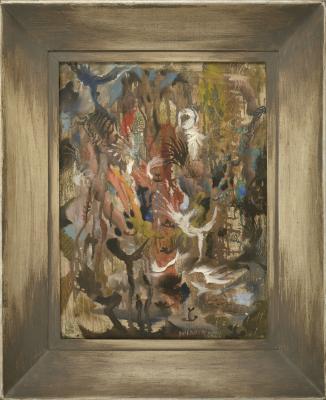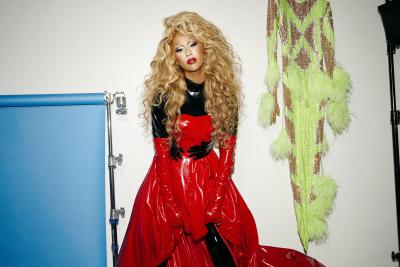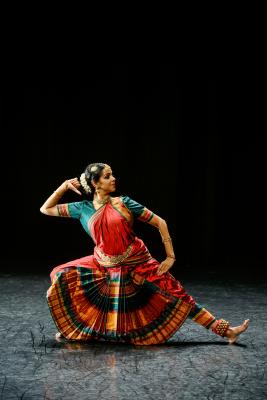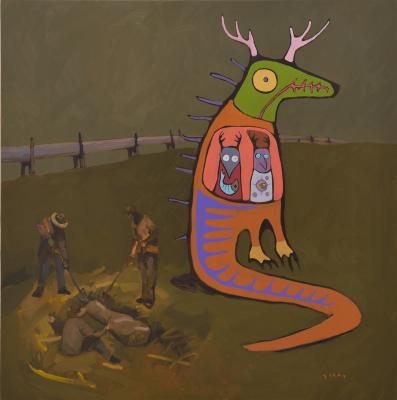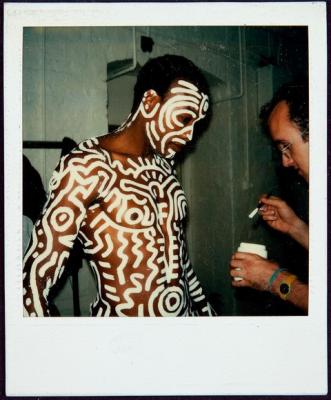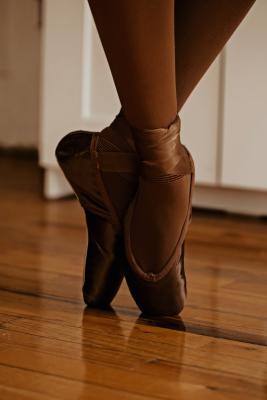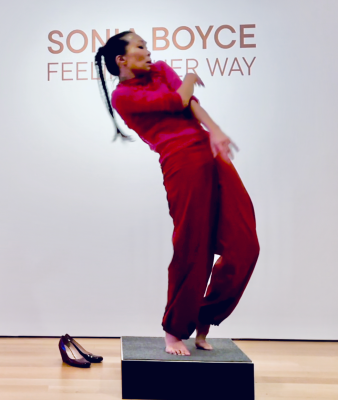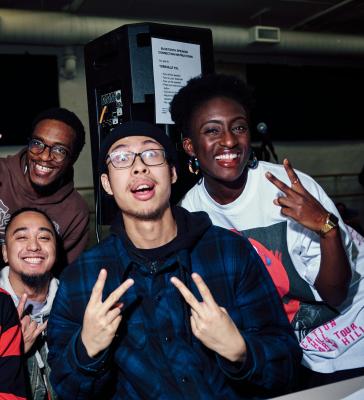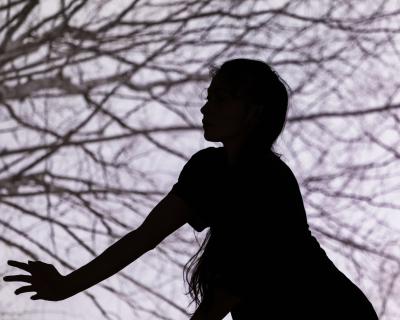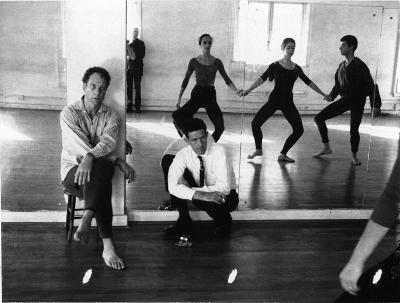The dance of life with Bill T. Jones
The legendary dancer and choreographer shares candid stories about working with Keith Haring
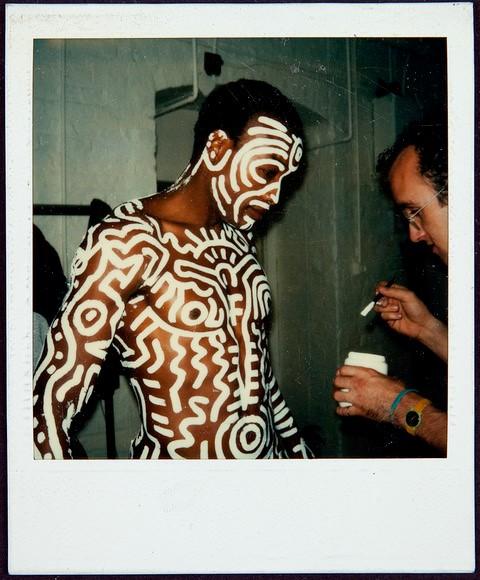
Photo: Keith Haring Foundation Archives
On Wednesday, March 6, world-renowned dancer and choreographer Bill T. Jones will appear live at the AGO for a conversation with Georgiana Uhlyarik, Fredrik S. Eaton Curator, Canadian Art at the AGO. They will discuss the storied life and iconic work of Keith Haring, their many collaborations and his experiences living in New York City in the 1980s.
Co-founder and Artistic Director of the famed Bill T. Jones/Arnie Zane Dance Company, Jones is arguably one of the most socially, politically and emotionally compelling choreographers alive today, and his collaborations with Haring in the 1980s resulted in some of the most recognized imagery of the era. Jones has received several major accolades throughout his esteemed career including a Tony Award for Best Choreography in 2007 for Spring Awakening and again, in 2010 for FELA! In 2010 as well, his legacy was recognized with Kennedy Center Honour for his many contributions to American culture and the performing arts.
In anticipation of the March 6 talk, Foyer spoke with Jones about three of his key collaborations with Haring. He shared candid insights about Long Distance, their 1982 duet and first collaboration (video of which is on view in Keith Haring: Art is for Everybody), being a special subject for Haring’s iconic body painting in 1983, and Secret Pastures, a 1984 production by Bill T. Jones/Arnie Zane Dance Company in which Haring created the stage design.
Long Distance (1982)
Jones: Long Distance was part of an evening I organized at the historic lower Manhattan Kitchen space. I remember on that particular evening, I was focusing on duets, and the first thing on that program was Long Distance with Keith Haring painting and me dancing. Keith was, as always, about lines and figuration. And what am I about? I'm about this body and its display, and usually it is a Black body in a room full of white people. I had a line painted down the centre of my face, which was a reference to line making, but also a reference to something shamanic. The music was just [Keith] dipping his brush into a can and doing what he does.
I was first introduced to Keith in New York City, but then I went to Kutztown, where he’s from. A teacher at Kutztown University named James Carroll said the amazing thing about Keith was that he had a quality similar to Picasso in that he could look at a large surface area, start painting and never correct himself. So, he was improvisational but with a great assuredness [a quality reflected in Long Distance]
My work was often improvisational as well, but this piece was not actually. This piece was very much about the structure – a kind of T-shaped structure. I started against the back wall where Keith was painting, and I moved down. And I would go up and down, up and down, occasionally moving diagonally to the right or left. It was very rigorous on my part.
It was an art-world event. Keith was the “it boy” at that moment. Around that time, he was on the cover of five major art magazines. He was much loved, and he was much hated. The art world did not understand this guy.
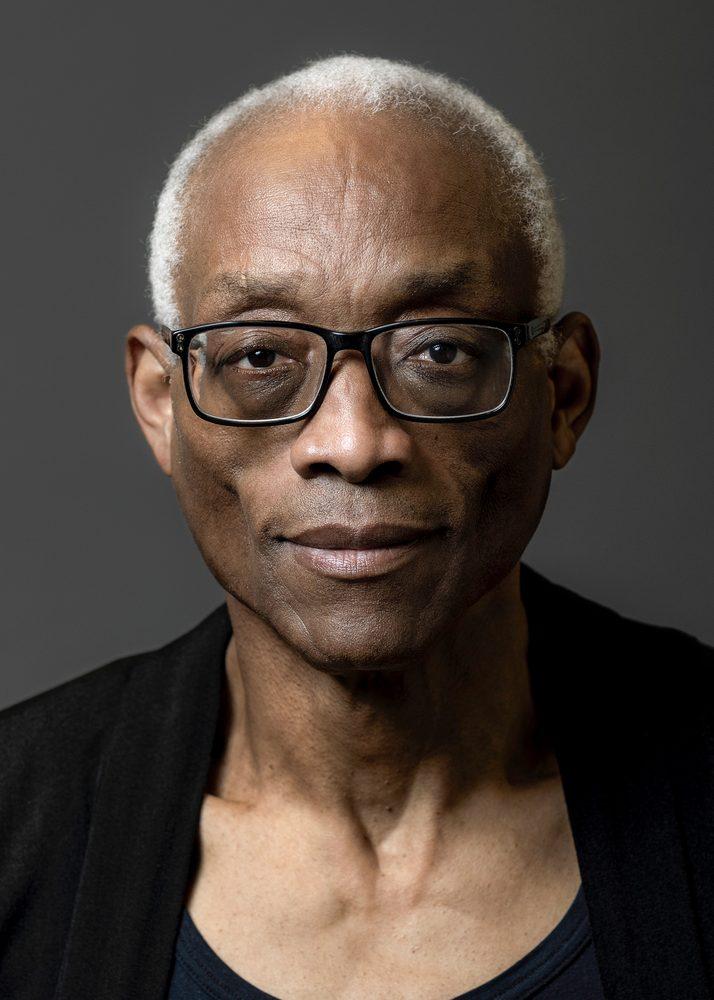
Bill T. Jones by Maria Baranova
Body Paint (1983)
Jones: In the early 80s, Keith and I still had the freedom of the counterculture. We still believed that we could be ourselves, and we were not defined by any categories. And by that, I mean, what does it mean to have a white man painting a naked black man's body?
A few weeks before Keith did the body painting, I visited his studio. It was always full of beautiful young people – often young men of colour, hanging out, smoking joints and listening to music – all while Keith was steadily working. Every time you came in, on the coffee table would be a publication that recently featured him – he was all over the world. On this particular day, there was a magazine with an image of a handsome Brazilian soccer player standing inside of a Keith Haring jar. He was shirtless and Keith had painted him from the waist up. And Keith said, “I would like to paint you, but do the whole thing.”
I think Arnie [Zane] and I were already performing in London around the same time. The body paint work was under the auspices of [art dealer] Robert Fraser – the notorious Robert Fraser who was known for hanging out, and getting arrested with the Rolling Stones back in the 60s. Robert was bringing [to London] the latest bad boy, Keith Haring, and Keith was decorating two galleries, and doing this body painting event.
Kwong Chi, the great documenter of Keith's subway works, Arnie Zane with a portable camera, and a few other people were around, and Keith completed it in four hours.
There was never any question that I trusted him to do whatever he wanted to do. But I said “Keith, whatever you do, I cannot be an anonymous Black man who you're painting. It’s got to be choreographer Bill T. Jones”. That's why we're talking about it as a collaboration right now.
Secret Pastures (1984)
Jones: When Arnie Zane and I approached the much-loved impresario, Harvey Lichtenstein, the director of the Brooklyn Academy of Music, he did not know who Keith Haring was. We brought in one of Keith’s Day-Glo pink figures with three eyes. Harvey said, “whoa, what is this?”, chuckling under his breath, because in his mind, he knew this was what the next wave of young artists was supposed to do.
Harvey offered us this commission, and Arnie and I knew that we would be met with disapproval from certain quarters in downtown [Manhattan] because we were the kind of the rabble rousers, the unwashed, who were doing some sort of a dance, which was a cross between gymnastics and pantomime. We were very art-historically minded, but we were not slick.
In my biography, Last Night on Earth (1995), I described the opening night. Andy Warhol and Madonna were sitting two rows back from Arnie’s mother and father. Deborah Jowitt, writing for The Village Voice said, “this is one of the first dance pieces ever made that was influenced by MTV.” We took it to be quite a compliment and we were proud of that. It said something about our aesthetic, that we were not hemmed in by high white art.
When Keith came in to work with us, he was flattered. He knew that there were important collaborations between dancers and visual artists. For instance, Robert Rauschenberg and Trisha Brown had a very deep friendship that turned into collaboration. And I think he knew about Merce Cunningham and Jasper Johns, among others. So, Keith saw us as the next generation of dancers/choreographers and visual artists working together. He had even said to me sometime before he got ill that he had learned that Rauschenberg was giving Trisha Brown a painting every year to help her company, and he wants to do the same for my company.
Don’t miss Bill T. Jones in conversation live at the AGO on Wednesday, March 6 at 7pm. Book your tickets here.
Keith Haring: Art is for Everybody is on view at the AGO until March 17, 2024. The exhibition is organized by The Broad, Los Angeles and curated by Sarah Loyer, Curator and Exhibitions Manager, The Broad. The AGO's presentation is curated by Georgiana Uhlyarik, AGO's Fredrik S. Eaton Curator of Canadian Art. For entry into the exhibition, purchase an AGO Membership or Annual Pass. Visit the AGO website here for more details.
